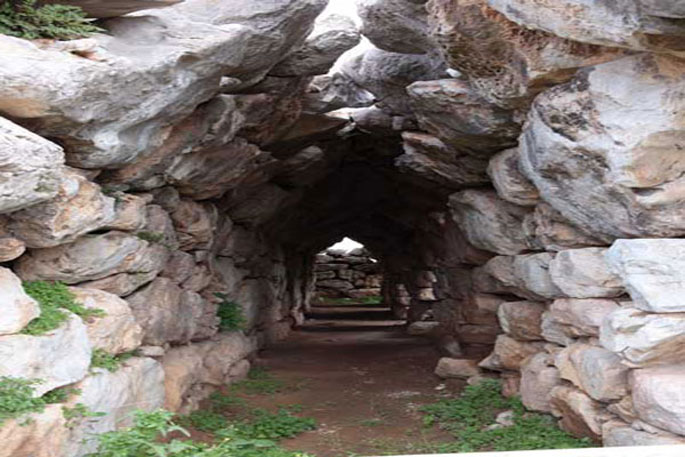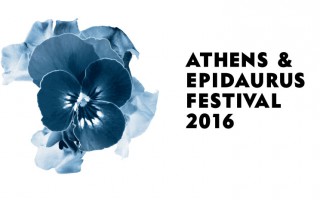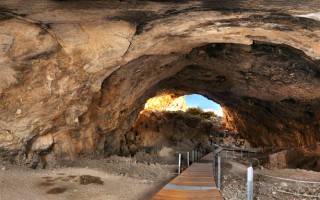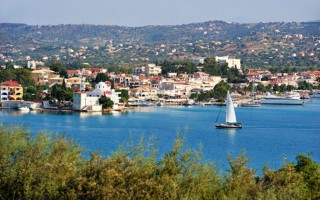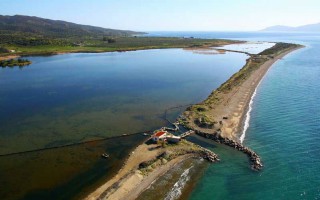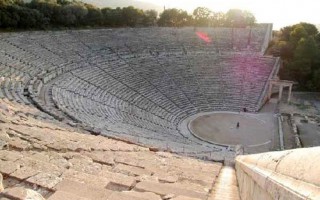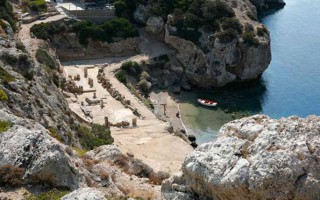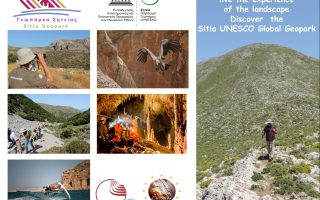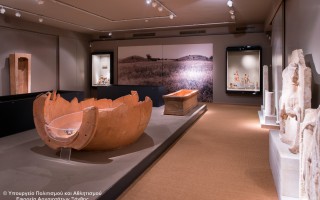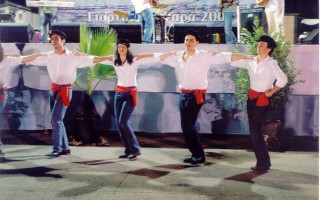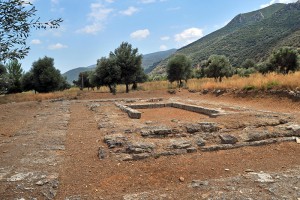 The archaeological site of ancient Troezen, homeland of mythical Thiseas, extends across a green land 3km away from the port of the town. It was the place where Phaedra and Hippolitus fell in love. At the site we find the ruins of the temple of Hippolitus founded by Diomedes and the buildings and the precinct constructed in the late 4th century or the early 3rd century B.C. over an ancient building. There are also ruins of ancient sanctuaries, walls, Phaedra’s monument, the Agora, the stadium and other buildings. All the findings are displayed in the museums of Poros and Athens.
The archaeological site of ancient Troezen, homeland of mythical Thiseas, extends across a green land 3km away from the port of the town. It was the place where Phaedra and Hippolitus fell in love. At the site we find the ruins of the temple of Hippolitus founded by Diomedes and the buildings and the precinct constructed in the late 4th century or the early 3rd century B.C. over an ancient building. There are also ruins of ancient sanctuaries, walls, Phaedra’s monument, the Agora, the stadium and other buildings. All the findings are displayed in the museums of Poros and Athens.
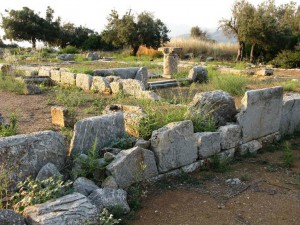 Surrounded by walls descending from the ancient citadel, the ruins of ancient Troezen, amidst olive groves and trees, are located to the west of the modern town of Trizina, on the northern slopes of mount Aderes, in a plain between two ravines. According to mythology, Troezene was the homeland of Theseus.
Surrounded by walls descending from the ancient citadel, the ruins of ancient Troezen, amidst olive groves and trees, are located to the west of the modern town of Trizina, on the northern slopes of mount Aderes, in a plain between two ravines. According to mythology, Troezene was the homeland of Theseus.
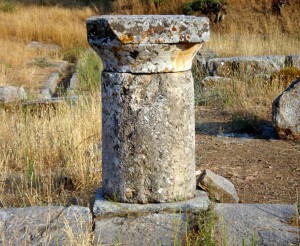 Its first king was Orus who passed his kingdom down to his grandson Althepus, son of Poseidon. After the reign of many kings, the kingdom came under the power of Pittheus, grandfather of Theseus who named the region Troezen after his dead brother, Troezen. The region is connected to the son of Theseus, Hippolitus. The second wife of Theseus, Phaedra fell in love with her young stepson and defamed him to his father. Hippolitus was killed by Poseidon following an order of Theseus. The worship of Hippolitus was connected to the worship of Asclepius. Asclepius brought Hippolitus back to life after request of Artemis. The sanctuary of Hippolitus is 800m away from the agora and it extends to 4000m². It was founded by Diomedes outside the walls of ancient Troezene because he had been saved from the bad weather when he was returning from Troy. The sanctuary’s precinct and buildings were built in the late 4th or early 3rd century B.C. around an older place of worship as indicated by the ceramic and pottery shards found on the site. It was a peripteral sanctuary with cella (inner shrine), pronaos (fore temple) and opisthonaos (rear temple).
Its first king was Orus who passed his kingdom down to his grandson Althepus, son of Poseidon. After the reign of many kings, the kingdom came under the power of Pittheus, grandfather of Theseus who named the region Troezen after his dead brother, Troezen. The region is connected to the son of Theseus, Hippolitus. The second wife of Theseus, Phaedra fell in love with her young stepson and defamed him to his father. Hippolitus was killed by Poseidon following an order of Theseus. The worship of Hippolitus was connected to the worship of Asclepius. Asclepius brought Hippolitus back to life after request of Artemis. The sanctuary of Hippolitus is 800m away from the agora and it extends to 4000m². It was founded by Diomedes outside the walls of ancient Troezene because he had been saved from the bad weather when he was returning from Troy. The sanctuary’s precinct and buildings were built in the late 4th or early 3rd century B.C. around an older place of worship as indicated by the ceramic and pottery shards found on the site. It was a peripteral sanctuary with cella (inner shrine), pronaos (fore temple) and opisthonaos (rear temple).
According to relevant inscriptions found on the site, a sanctuary of Asclepius was situated in the shrine. The remains of a spring and the foundation of other buildings, such as treatment rooms attest to the existence of the Asclepius sanctuary. The good climate of the region and the clean water led to the creation of such a sanatorium, which was however outshined by the Asclepius sanctuary in Epidaurus. The earthquake caused by the volcanic eruption of Methana in the 3rd century B.C. played a decisive role to the temple’s decline. The buildings were then destroyed and they were rebuilt during the Roman age. However, after the predominance of Christianity, the ancient material was used for the construction of churches. The Diocese church in the same area is considered a good example. It is an old Christian church dating back to the 6th century A.D. Apart from these monuments, the visitor can see ruins of the walls and of the monument of Phaedra, the Agora on the foot of the mountain, remains of ancient temples such as the temple of Venus of Kataskopia (espionage), of Artemis Sotiros (saver), Athena Sthenia and Zeus Sotiros (saver) and the ruins of the stadium and the theatre. The visitors will be amazed by a fortified tower, known as “the Palace of Theseus”, which was built in the 5th century but also has medieval elements. The ruins of a Roman building stand on the south of this tower, which is considered to be the Temple of the Muses. Among the findings at the site are gravestones, capitals, ceramic vessels and pottery, figurines, two statuettes and amphoras exposed at present at the Arcaelogical museum of Poros and the National Archaeological museum of Athens.
Source: www.mythicalpeloponnese.gr

